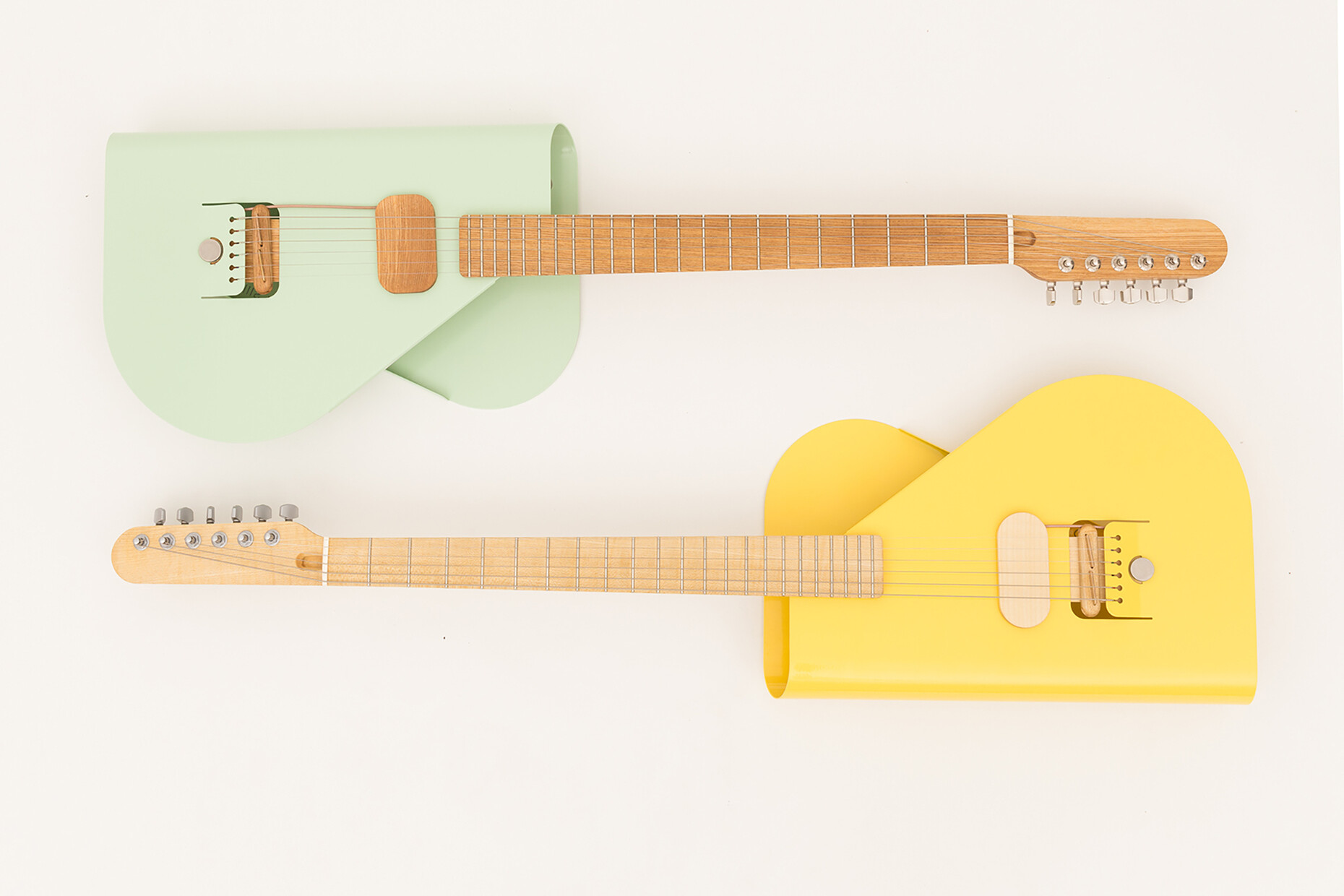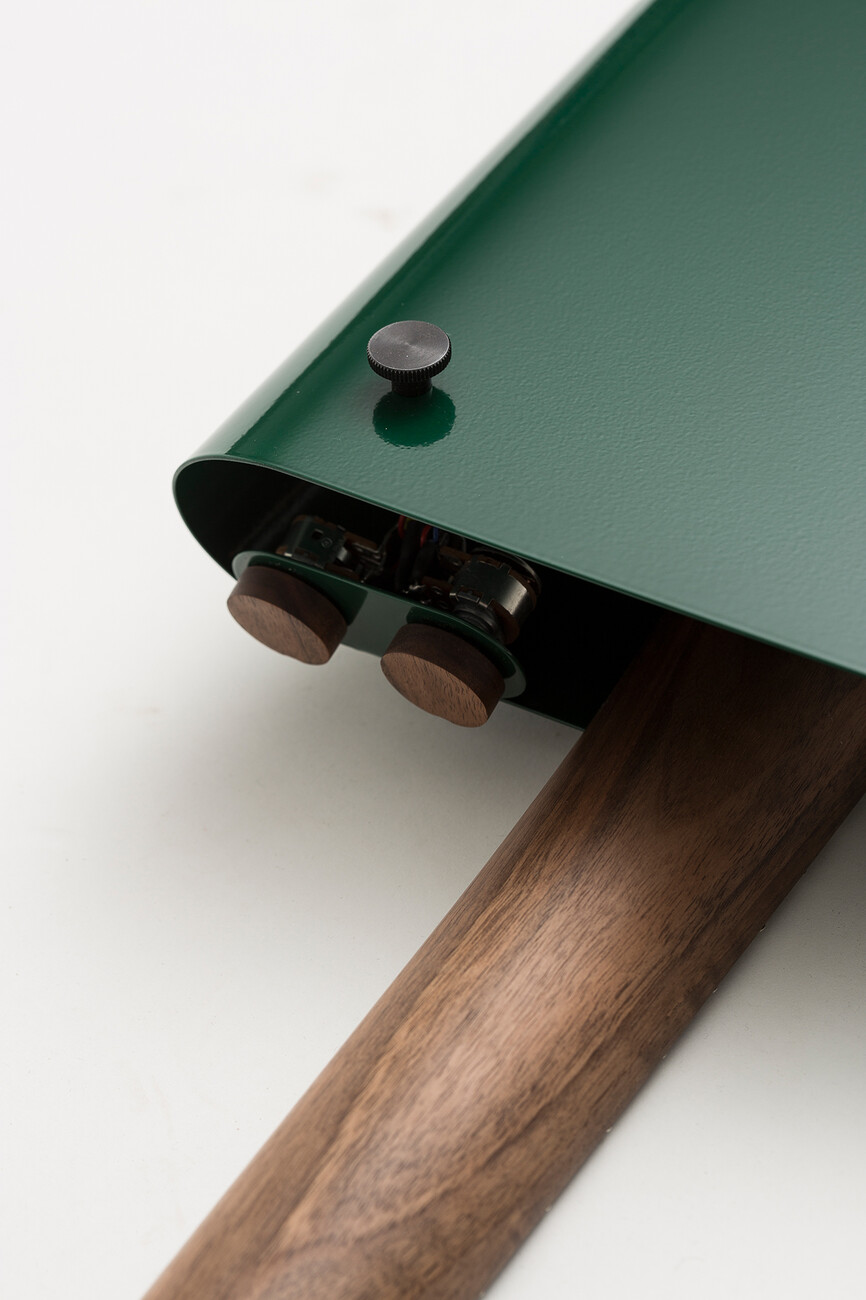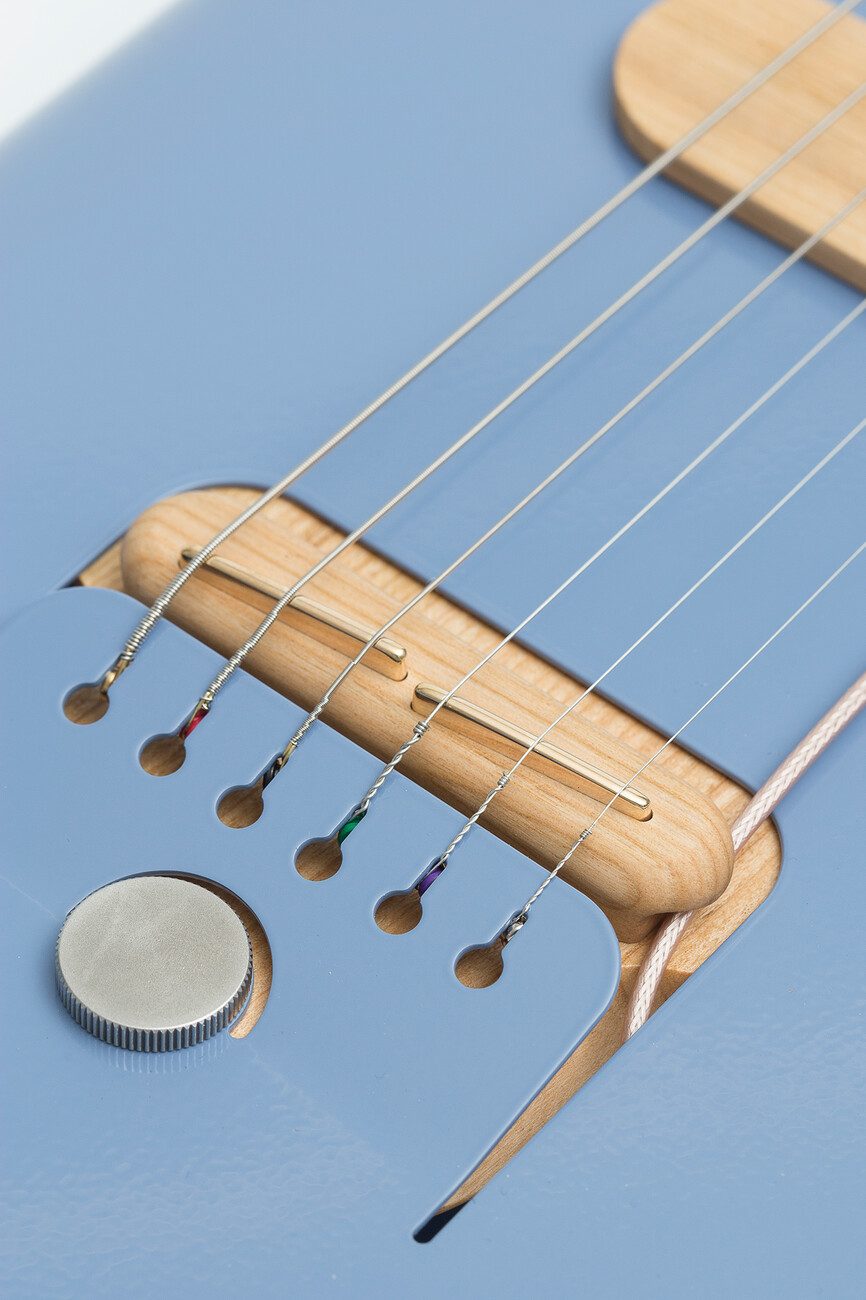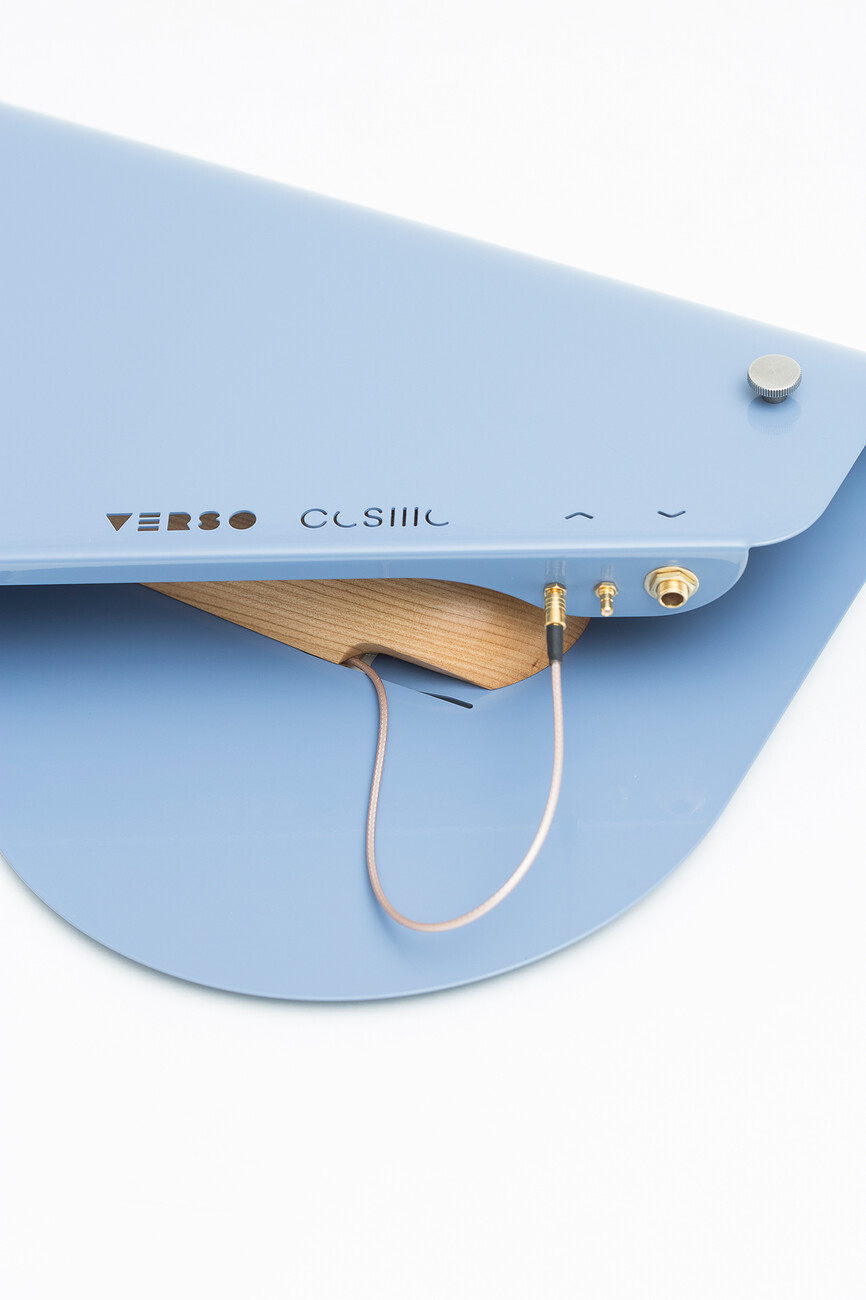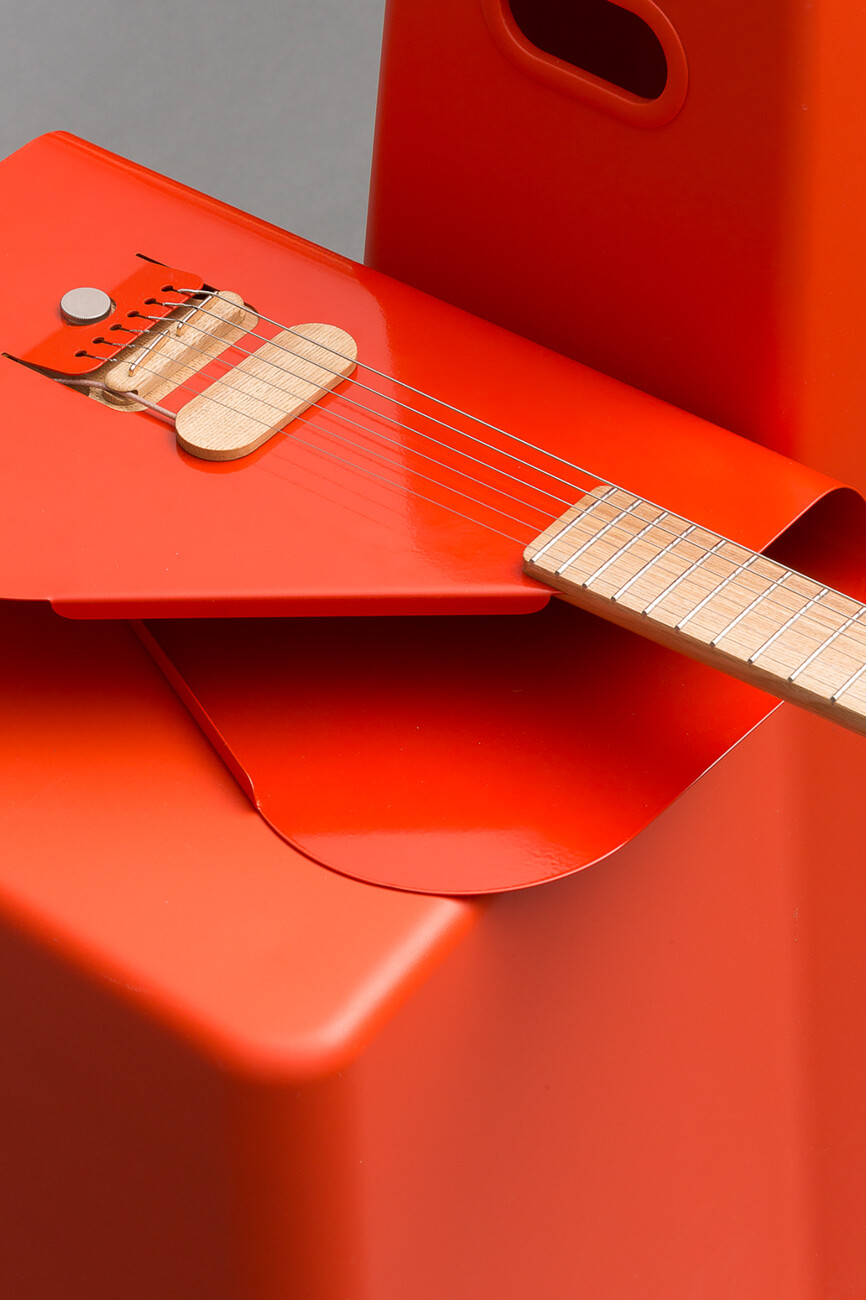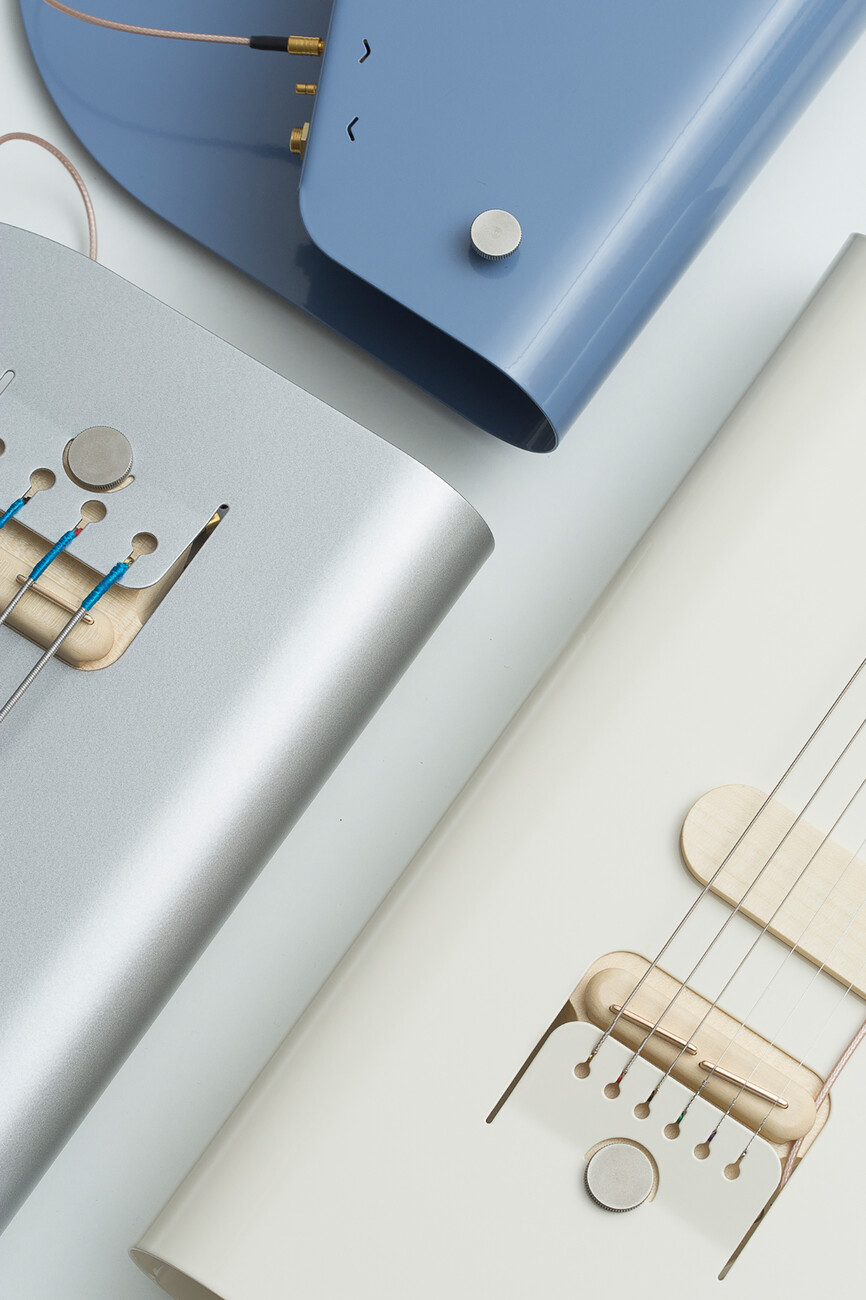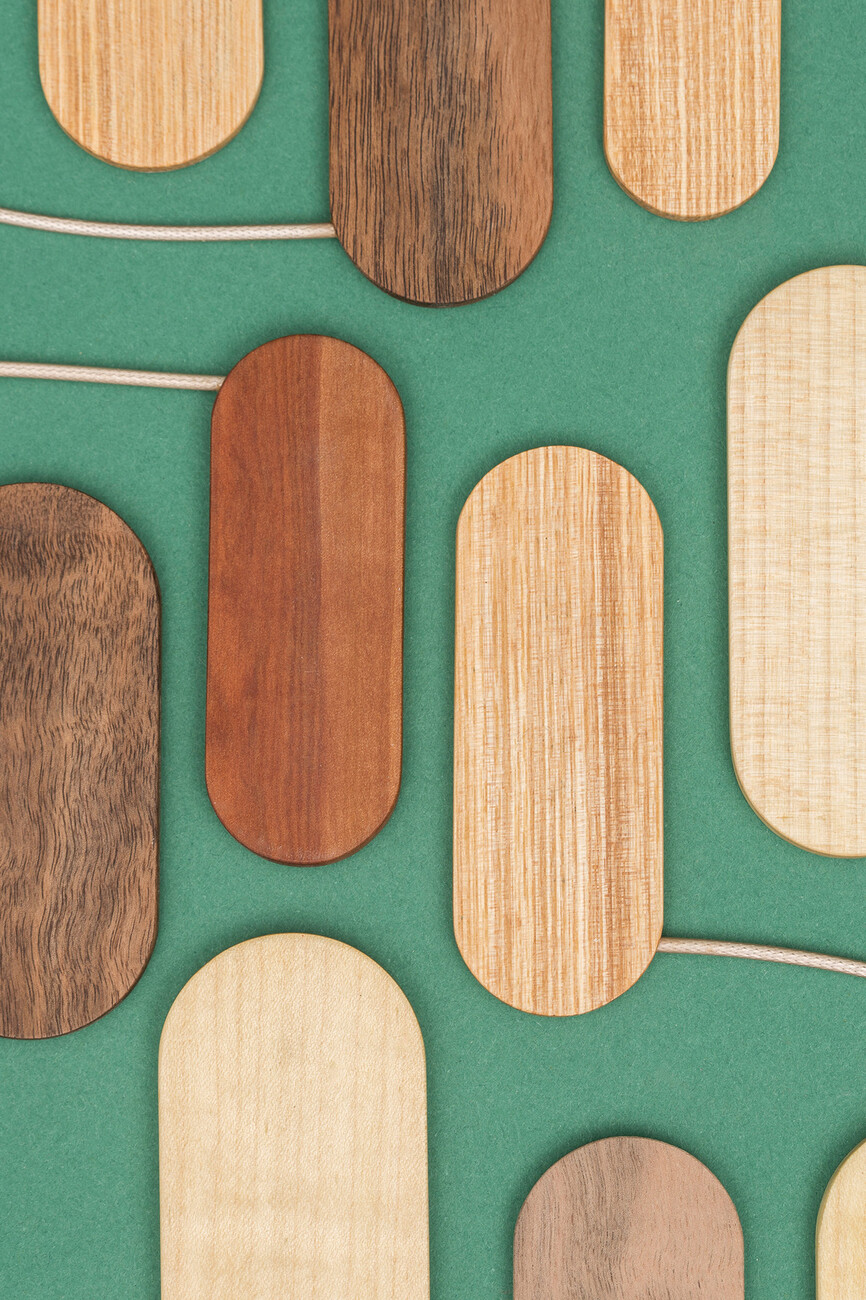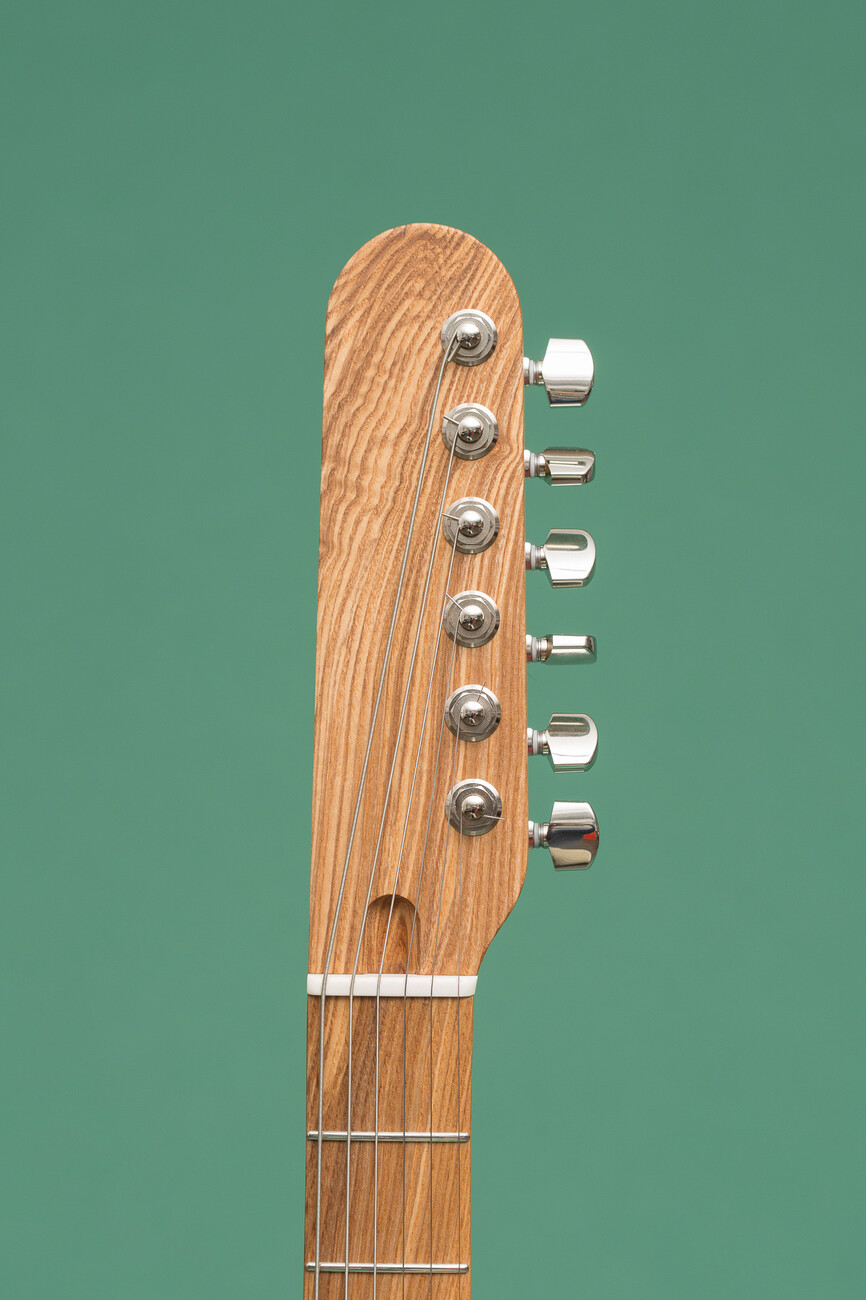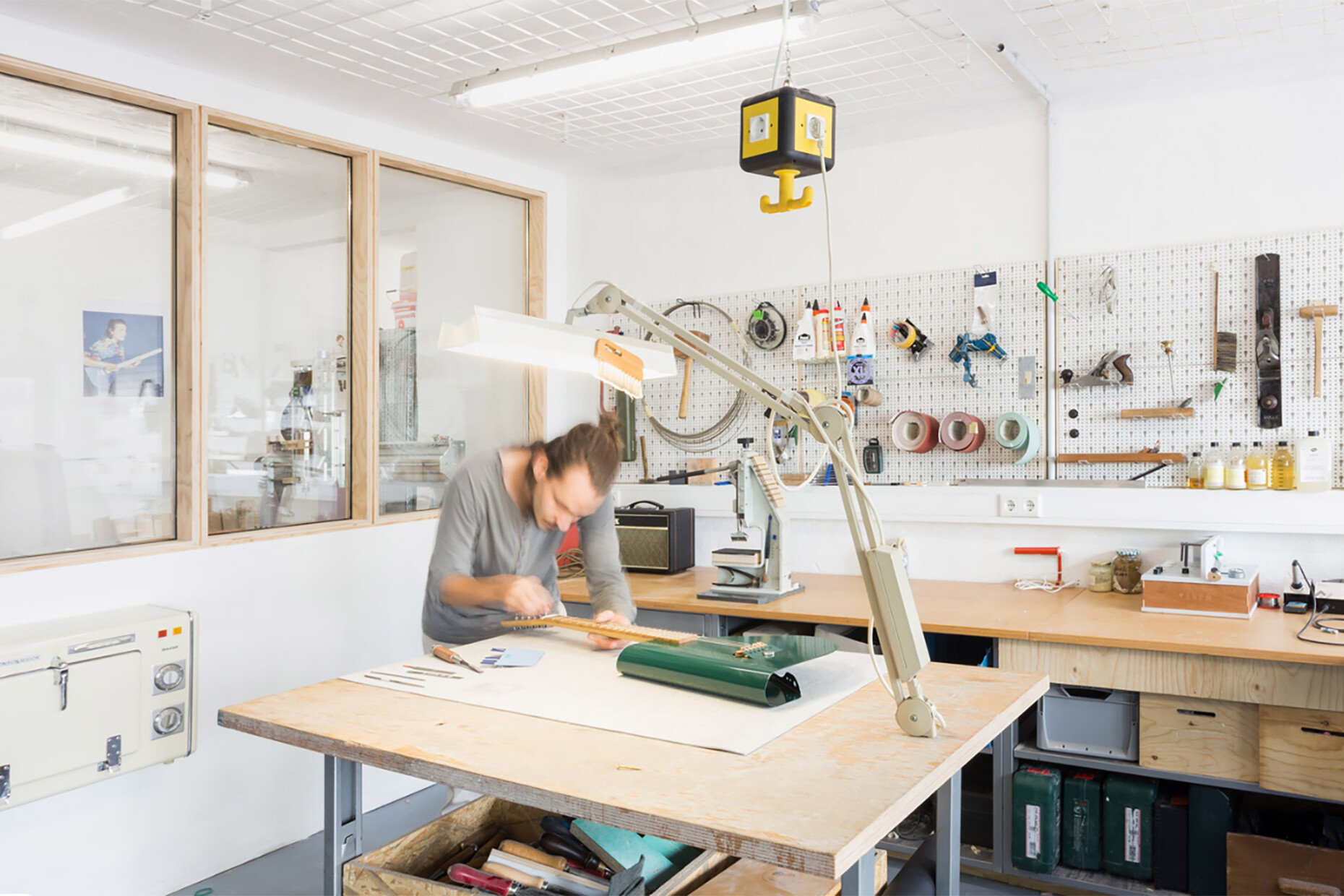The Sound of Reduction
Alexander Russ: Robin, you studied product design, but now you work as a guitar maker and have your own company, Verso Instruments. How did that come about?
Robin Stummvoll: Designing a guitar was the subject of my final thesis. The question was also posed as to whether I would like to work as a furniture designer after graduation. I had already gained some experience in this field beforehand, for example in the form of an internship with Steffen Kehrle in Munich. That was a great time, but at the same time I realised for myself that I didn't necessarily want to be part of a large product machine – even though as a designer you can definitely take a critical look at it. The making of instruments results in the creation of music – something immaterial and emotional. I find this thought very beautiful.
Why a guitar in particular?
Robin Stummvoll: I'm a guitarist and have been making music since my school days. I never intended to become a professional musician, but the whole thing has accompanied me for a long time and has had a big influence on my studies. With my thesis and later with the foundation of Verso Instruments, I then tried to combine both.
With the Cosmo model, you have designed an electric guitar that differs from other guitars not only in its formal language, but also in its functional possibilities. Can you tell us more about it?
Robin Stummvoll: In my research I came across a 1932 Rickenbacker guitar nicknamed the Frying Pan. What I found exciting about it was that the guitar was made entirely of aluminium. At the same time, it's considered one of the first electric guitars. In addition, Rickenbacker also introduced a guitar made of Bakelite in 1935. I found the realisation that the very first electric guitars were not even made of wood very interesting. Amazingly, these instruments have a very warm and mellow sound, which you wouldn't expect given the choice of materials. That fascinated me, and so the question arose in my mind of how much it would actually take to make good sound. I wanted to start with something very raw, so I first went to the hardware store to build a first prototype for my guitar out of a roof batten. Then, little by little, the Cosmo emerged from that.
To what extent did your background in product design play a role in the design of the guitar?
Robin Stummvoll: By not only being influenced by guitars as I was working on it. My background allowed me to look at the subject from a new perspective, ask different questions and work with unusual materials. The work of Ray and Charles Eames, who also did a lot of material research, for example with fiberglass or plywood, was also an inspiration. Dieter Rams and Konstantin Grcic were certainly also an influence.
What happened after the batten guitar?
Robin Stummvoll: The batten guitar was a reduction to the bare essentials, i.e. the guitar neck, which is necessary for the playability and sound of the guitar. Since the batten guitar already sounded really good, I considered the body as being a purely ergonomic part of the instrument and experimented with materials that are not at first associated with sound – such as felt, various textiles and foam. At some point I started to put formfleece around the neck, which resulted in an interesting meshing of two-dimensional surface and three-dimensional body. But the whole thing was too unstable, so I switched to harder materials like sheet metal. This is how the body of the Cosmo was finally created. Because of the sheet metal, I first came up with the idea that the magnetic pickup, which amplifies the guitar acoustically, could be attached to the steel body flexibly, without any screws. It sticks to the metal body all by itself because of its integrated magnets.
Interestingly, no one before you has ever come up with the idea of attaching pickups this way – although it's actually pretty obvious and offers new tonal possibilities due to its flexible positioning.
Robin Stummvoll: Yes, that's true. However, the development of the matching pickups was very complex.
In what way?
Robin Stummvoll: The pickups on the Cosmo have to be very flat, because on a wooden electric guitar they are usually recessed into the body two to three centimeters. With the Cosmo, the pickup is instead located directly on the surface, which requires a very compact design. I therefore use small but very strong neodymium magnets and wind the copper coils many times wider and flatter than usual. I found these changes very convincing sonically as well. For the body of the pickup I experimented with 3D printing at first, but then decided on a wooden body made from the same block of wood as the guitar's neck.
You're not actually a skilled guitar maker. How difficult was it to acquire the appropriate skills?
Robin Stummvoll: I built a lap steel guitar when I was 15. That was my first experience, but I actually didn't build another guitar until I got my diploma. That only started again with the Cosmo. I then learned the whole thing through books and Youtube videos – and of course a lot through actual practice. Over time, I got better and better. But it was a very long process until I had the feeling that I could also sell the instruments I built.
You also pursue a sustainability agenda when building your guitars. Can you tell us more about that?
Robin Stummvoll: This mainly concerns the choice of woods – and that would also be my biggest criticism of electric guitar construction: that tropical wood is still being used. In my opinion, there is simply no justification for that and in this day and age, regardless of whether it's a matter of sound or appearance, even if the wood comes from sustainable forestry. The demand is simply too high and the forestry industry does a lot of greenwashing. Many of these old trees can only be harvested from intact forests, destroying the environment in the process. That's why I only use local wood like maple, ash, walnut and cherry.
Guitars are a cultural artifact of the 20th century that are strongly associated with certain design and functional codes, which you are challenging with the Cosmo. What reactions have there been so far?
Robin Stummvoll: There is certainly a rather conservative faction among guitarists who are strongly influenced by the codes you've mentioned. But they tend to leave me alone, which is certainly also due to the fact that the Cosmo doesn't lean on existing models, but is something entirely its own. In this respect, the exchange has been very positive and productive so far.
Your work reminded me of products from companies like Teenage Engineering, which are very design-oriented in the creation of their electronic instruments – such as the OP-1 synthesizer and controller, which are now exhibited in design museums. What do you think of this development?
Robin Stummvoll: Teenage Engineering has certainly been a great inspiration for my work. One criticism, of course, is that the devices are really expensive and smack of artificial exclusivity. However, they are made in Sweden, have a high-quality finish and are also very well designed. Incidentally, this was something I paid a lot of attention to when developing the Cosmo: That the price does not become too astronomical, even though it's an instrument made in Germany according to people's individual wishes. In the end, the guitar shouldn't be a museum piece, but should be played by musicians.
How did you actually manage to do this in concrete terms?
Robin Stummvoll: The sheet metal body is very inexpensive to manufacture. In addition, there is no ornamentation on the guitar, which saves additional costs because certain process steps are not necessary. The whole thing was developed from the standpoint of playability, sound and ergonomics. Everything that serves these three parameters also finds its way into the guitar. I consistently leave out the rest.



